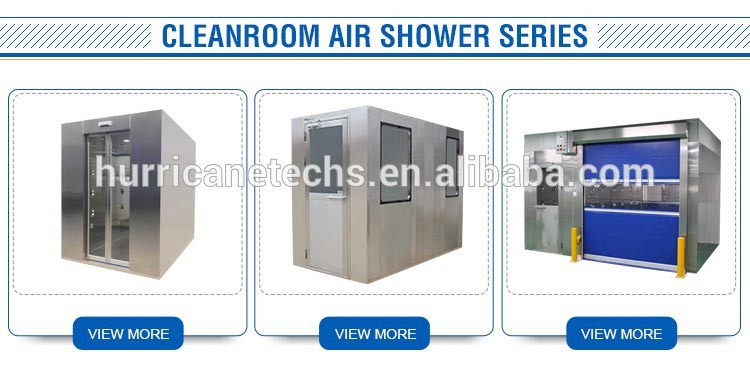There are two types of unidirectional clean rooms, namely horizontal flow and vertical flow. In a horizontal flow system, air flows from one wall to another. In a vertical flow system, air flows from the ceiling to the ground.

Unidirectional airflow is used when the concentration of suspended particles in the clean room or the concentration of microorganisms is lower. This type of clean room was formerly known as a "laminar flow" clean room. The names unidirectional and laminar flow describe the flow of air: the flow flows in one direction (either vertical or horizontal) and flows through space at an average speed, typically from 0.3 to 0.5 m/s (60 ft/min to 100 ft/min). Fig. 1 is a sectional view of a typical vertical flow clean room. As can be seen from the figure, air is supplied to the room by the HEPA filter on the ceiling of the clean room. The air flow, like an air piston, flows downward through the room, carrying away pollutants and then exiting them from the ground. After mixing with some fresh air from the outside, it is recirculated to the HEPA filter.
Suspension pollution from people and processes is immediately removed by this air, whereas turbulent ventilation systems use mixing and dilution principles. In an empty room without any obstacles, unidirectional flow can quickly remove contaminants at a much lower wind speed than previously mentioned. But in a workshop, the machines and the people walking around them can create a barrier to the flow of air. An obstacle can turn a unidirectional flow into a turbulent flow, thus forming a mass of air around the obstacle. Human activity can also turn a unidirectional flow into a turbulent one. In these turbulent flows, the air is diluted less because of lower wind speeds, resulting in higher concentrations of pollution. Therefore, the wind speed must be maintained in the range of 0.3 m/s to 0.5 m/s (60 ft/min to 100 ft/min) so that the interrupted unidirectional flow can be quickly restored and the pollution in the turbulent area around the obstacle can be sufficiently diluted.
With the wind speed can correctly show the unidirectional flow, because the higher the wind speed, the cleaner the room. The number of air changes per hour is related to the volume of the room, such as the height of the ceiling, so it is not suitable to represent unidirectional flow.